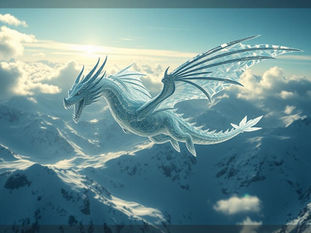
How to Get More Consistent and Better Images from Midjourney
May 17
3 min read
0
3
0

Creating images with AI tools like Midjourney is exciting. But sometimes, the results aren't exactly what you pictured. This post will walk you through ways to improve your images and get more reliable outcomes.
Start with Your Prompt Basics
Your text prompt is the most important starting point. Think of it as telling Midjourney what you want to see. A good prompt is clear and descriptive. It helps to include:
The main subject (e.g., a cat, a spaceship, a landscape).
The style you want (e.g., oil painting, photograph, anime).
Details about the setting, lighting, or atmosphere (e.g., sunny day, dark forest, cyberpunk city).
Specific actions or feelings (e.g., running, peaceful, busy).
You can start with simple prompts and add detail as you go. Experiment to see what works best for your vision.
Using Parameters to Guide Your Image
Parameters come after your main prompt. They give Midjourney specific instructions about how to generate the image. Some common ones include:
`--ar`: Sets the aspect ratio (like 16:9 for widescreen, or 1:1 for square).
`--v`: Chooses the Midjourney version to use. Different versions have different styles and abilities.
`--s`: Controls the style weight. A higher value pushes the image towards Midjourney's default artistic flair.
`--c`: Adjusts the chaos. Higher values give more varied and unexpected results.
`--no`: Tells Midjourney what to leave out (e.g., `--no trees`).
Learning a few key parameters can give you much better control over the final image.
Add Images to Your Prompts
You can use images as part of your prompt. This helps Midjourney understand the style, composition, or subject you're aiming for. Just paste the image URL at the start of your text prompt. You can even use image weight to tell Midjourney how much attention to pay to the image compared to the text.
Getting Consistent Characters or Styles
It can be tricky to get the same character or a consistent style across many images. Using multiple image prompts of your subject or using the `--cref` (character reference) or `--sref` (style reference) parameters can help a lot. These features tell Midjourney to try and match the reference you give it.
Speed Up Your Midjourney Workflow
Creating many images, testing prompts, and organizing your work can take time. Tools designed to help with this can make a big difference. Consider using automation tools if you generate a lot of images.
For instance, check out features offered by the Midjourney Automation Suite from TitanXT. It can help manage tasks and save time on repetitive steps.
Keep Practicing
Getting great results in Midjourney takes practice. Don't be afraid to try new things with your prompts and parameters. Look at images others have created for ideas, and see what prompts they used.
As you generate more images, keeping track of what works becomes important. Automation tools can assist here too. Using the Midjourney Automation Suite from TitanXT can help organize your experiments and results, making it easier to learn and improve.
Conclusion
Improving your Midjourney images comes down to understanding how prompts and parameters work together. By being more specific and using the available tools, you can steer the AI toward the results you want. Keep exploring and trying new techniques.
Ready to make your Midjourney image creation faster and more organized? Learn more about how the Midjourney Automation Suite from TitanXT can help.






